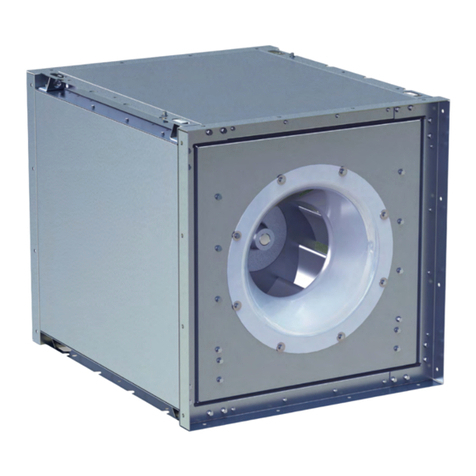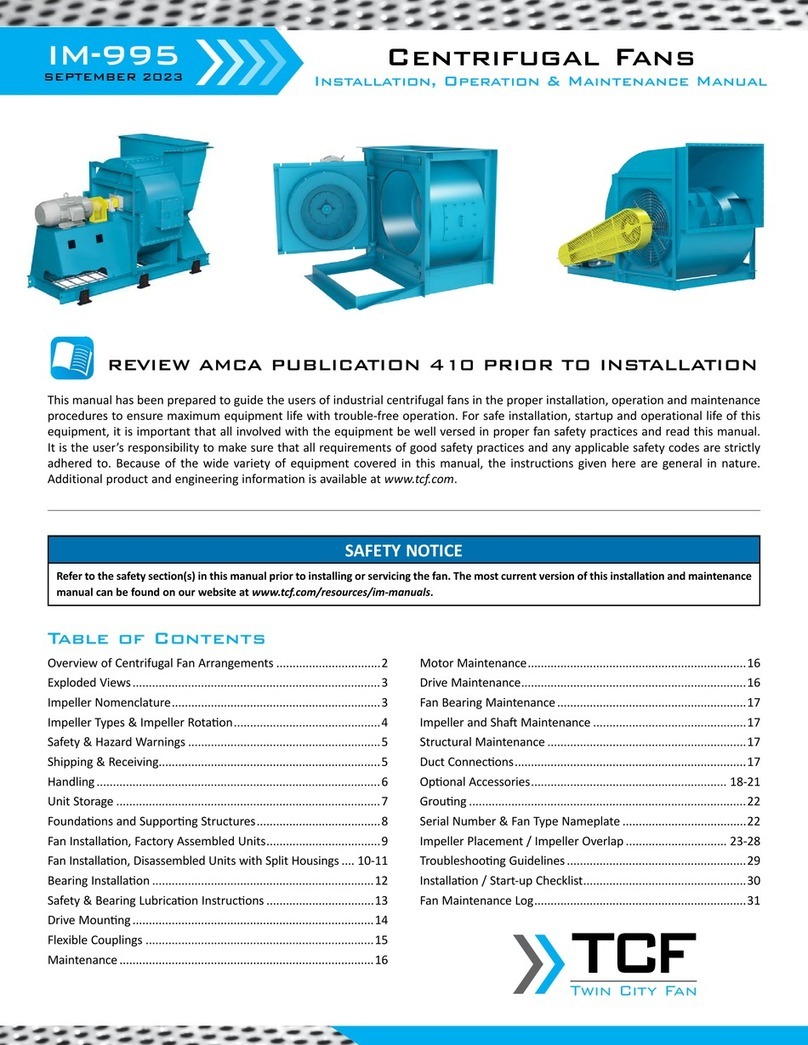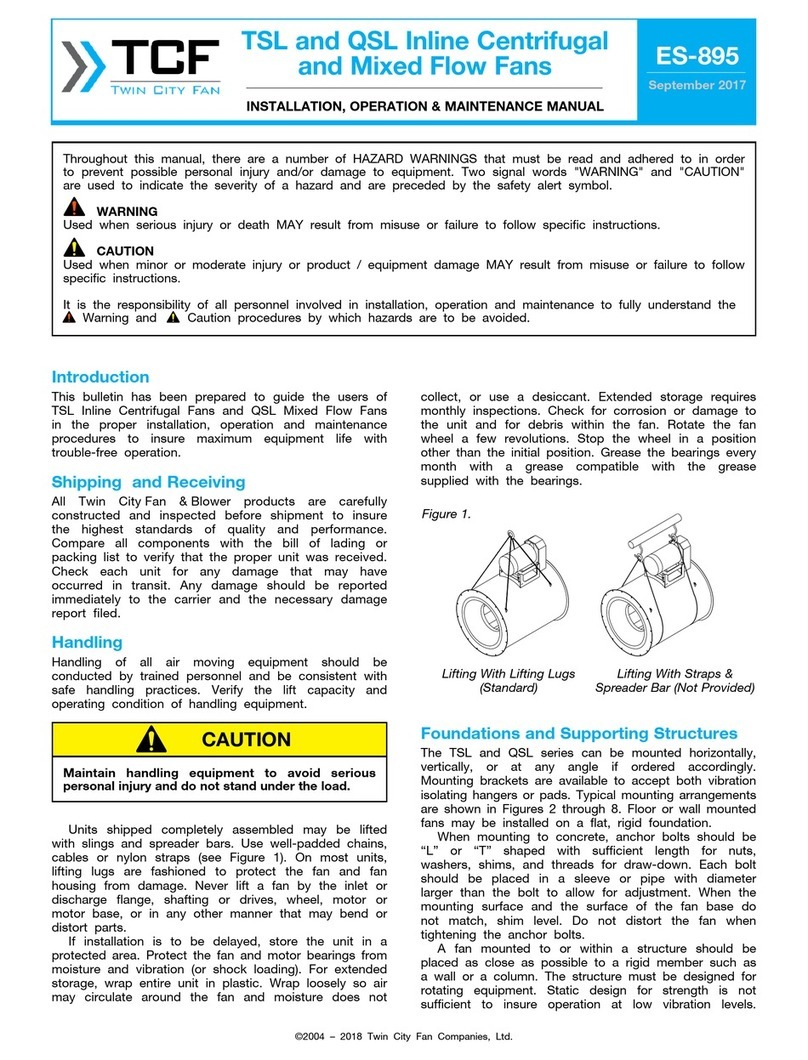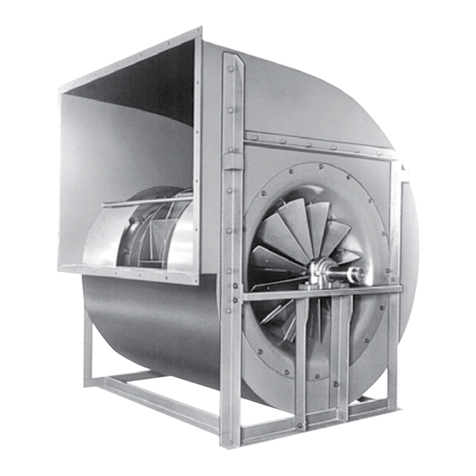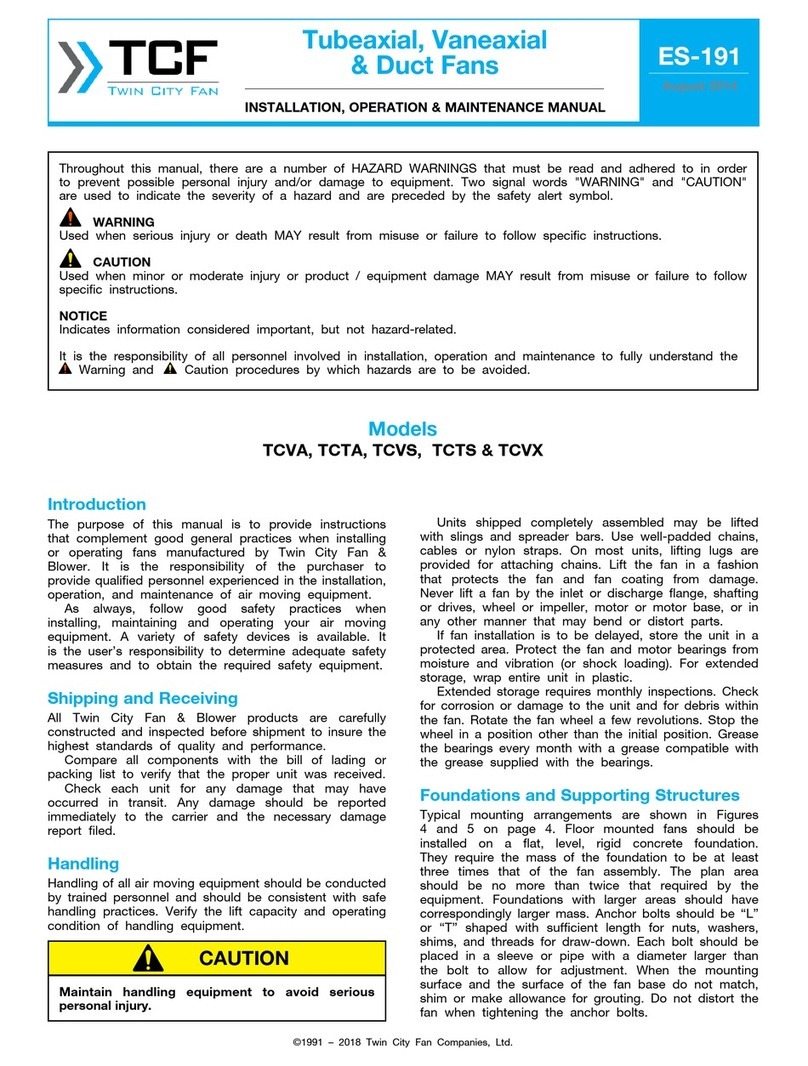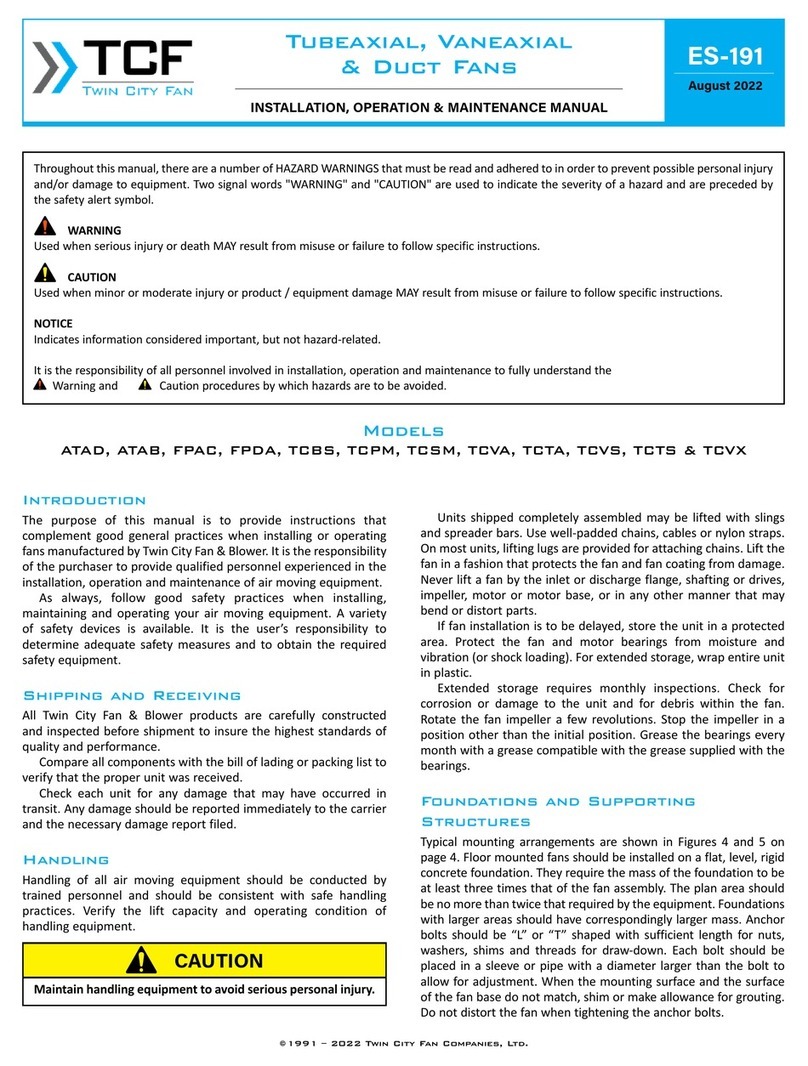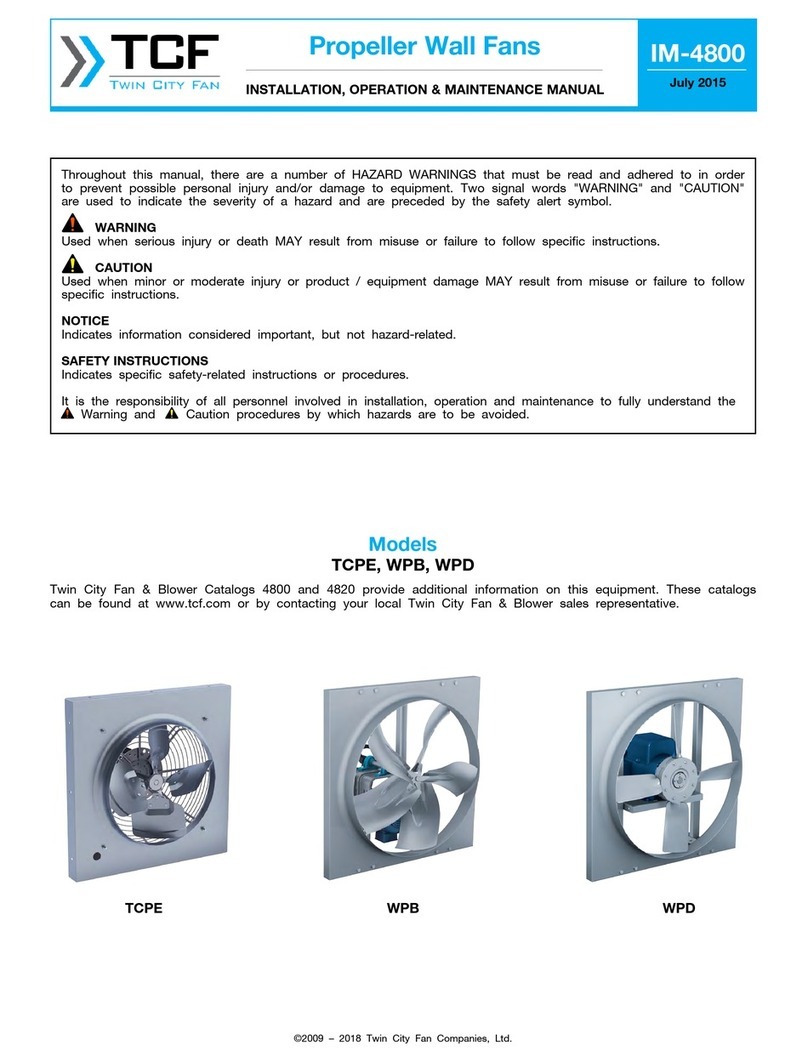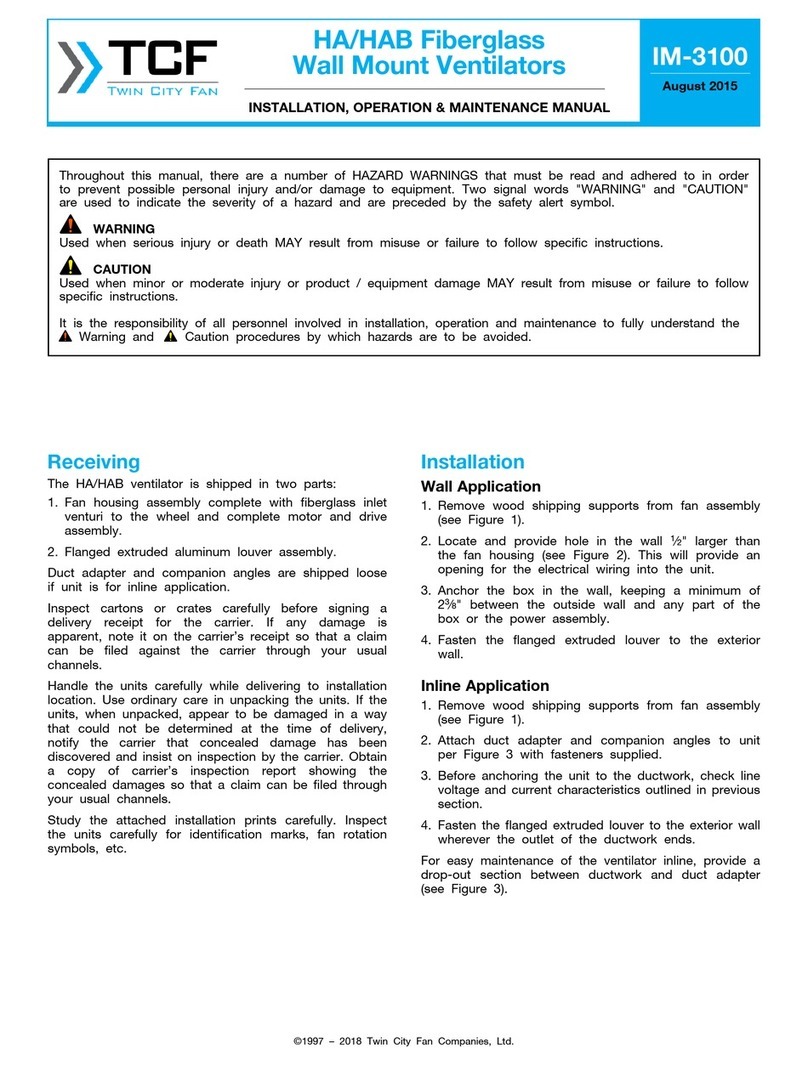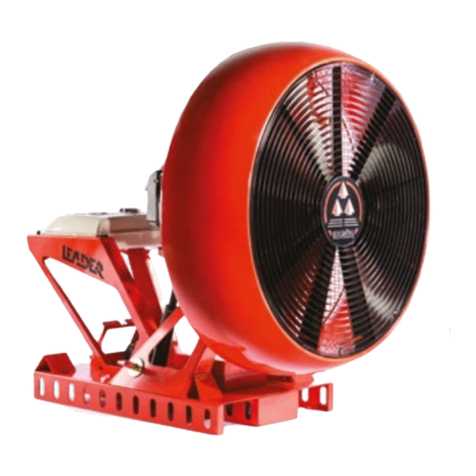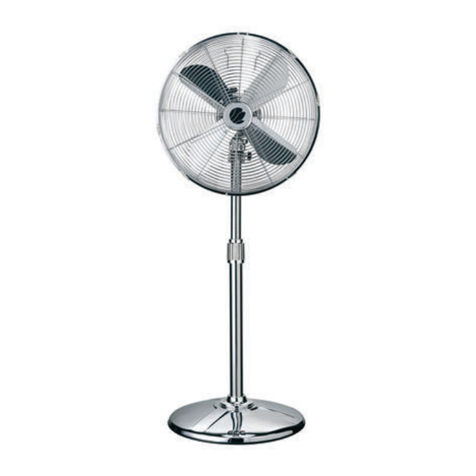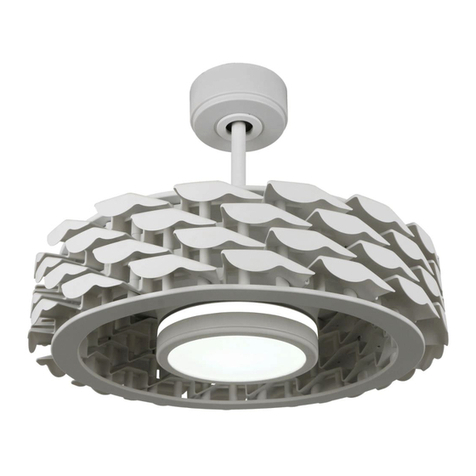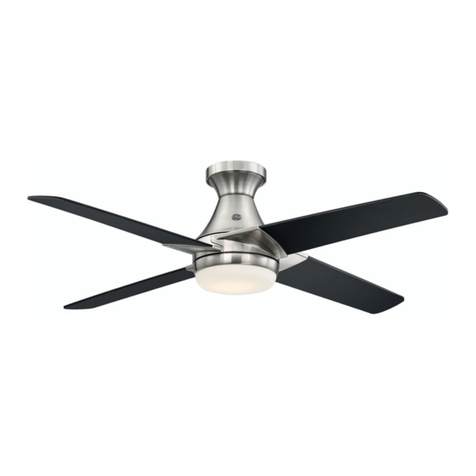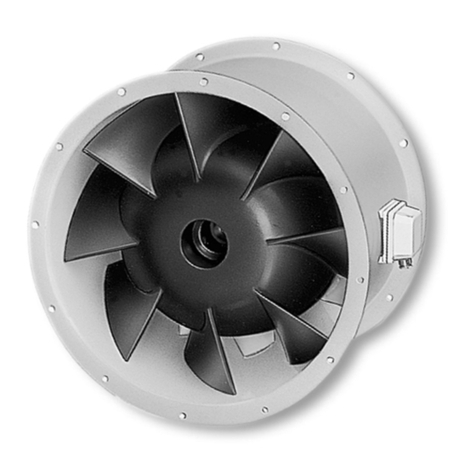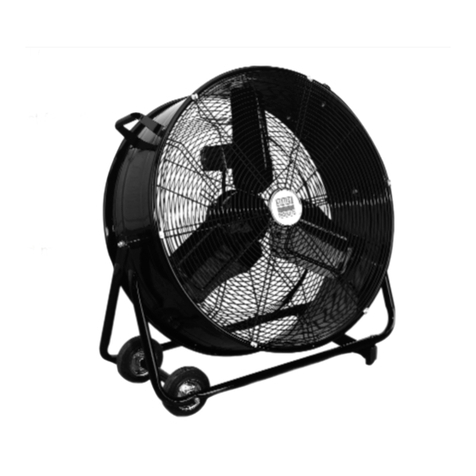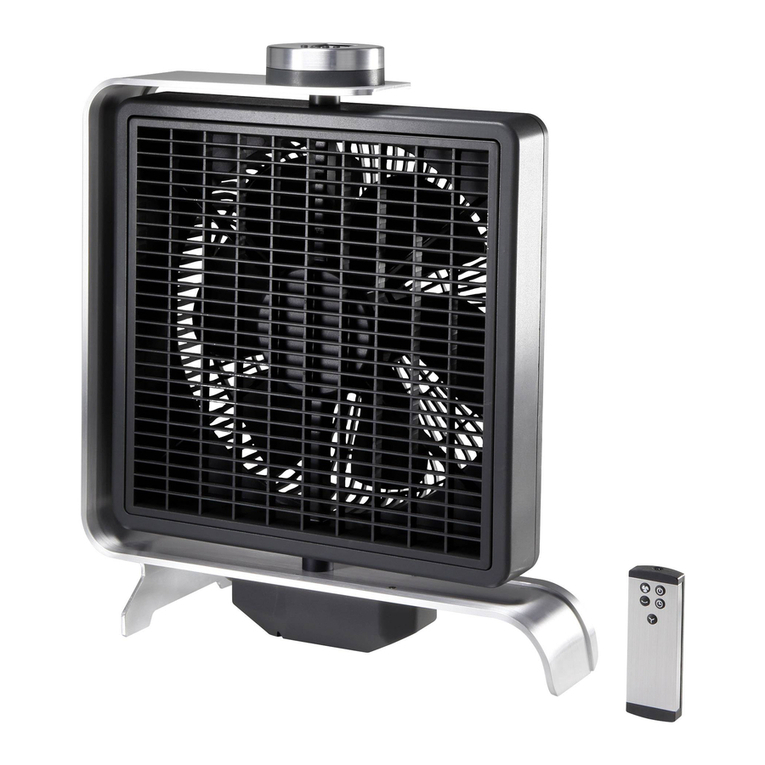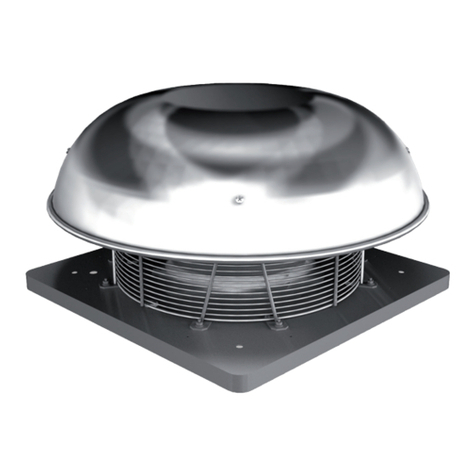TCF MPQN Instruction manual

Contents
Introduction .........................................................................1
Shipping and Receiving .....................................................1
Handling .............................................................................. 1
Short Term Storage ...........................................................1
Long Term Storage............................................................1
Foundations and Supporting Structures ..........................2
Fan Installation ................................................................... 3
Assembly of Fans and Sealing/Isolation Strips .............. 3
Fan Operation – Safety .....................................................3
Operation Checklist ............................................................ 4
Maintenance of Fans .........................................................4
General Motor Maintenance .........................................4
Wheel and Shaft Maintenance .....................................5
Structural Maintenance .................................................5
Troubleshooting Guidelines................................................5
Troubleshooting Performance Problems
Air Capacity Problems ..................................................5
Noise Problems ............................................................. 5
Vibration Problems ........................................................ 5
Motor Problems .............................................................5
Limitation of Warranties and Claims ............................... 6
Introduction
The purpose of this manual is to provide instructions
that complement good general practices when installing
or operating fans manufactured by Twin City Fan &
Blower. It is the responsibility of the purchaser to
provide qualified personnel experienced in the installation,
operation, and maintenance of air moving equipment.
Instructions given in the body of this manual are
general in nature and apply to a variety of models
manufactured by Twin City Fan & Blower. Most units
can be installed and maintained with the instructions
given.
Special applications may require additional information.
These instructions are supplied in the form of attached
appendices. Use the instructions in the appendix if the
directions in this manual differ from instructions in the
appendix.
As always, follow good safety practices when
installing, maintaining and operating your air moving
equipment. A variety of safety devices are available. It
is the user’s responsibility to determine adequate safety
measures and to obtain the required safety equipment.
Shipping and Receiving
All Twin City Fan & Blower products are carefully
constructed and inspected before shipment to insure the
highest standards of quality and performance.
Compare all components with the bill of lading or
packing list to verify that the proper unit was received.
Check each unit for any damage that may have
occurred in transit. Any damage should be reported
immediately to the carrier and the necessary damage
report filed.
Handling
Handling of all air moving equipment should be
conducted by trained personnel and be consistent with
safe handling practices. Verify the lift capacity and
operating condition of handling equipment.
Units shipped completely assembled may be lifted
with slings and spreader bars. Use well-padded chains,
cables or nylon straps. On most units, lifting lugs are
provided for attaching chains (see Figure 1). Lift the fan
in a fashion that protects the fan and fan coating from
damage. Never lift a fan by the inlet or discharge flange,
shafting or drives, wheel or impeller, motor or motor base,
or in any other manner that may bend or distort parts.
©2010 – 2018 Twin City Fan Companies, Ltd.
ES-110
February 2012
MPQN/MPQS Modular
Plenum Fans
INSTALLATION, OPERATION & MAINTENANCE MANUAL
Maintain handling equipment to avoid serious
personal injury.
CAUTION
Throughout this manual, there are a number of HAZARD WARNINGS that must be read and adhered to in order
to prevent possible personal injury and/or damage to equipment. Two signal words "WARNING" and "CAUTION"
are used to indicate the severity of a hazard and are preceded by the safety alert symbol.
WARNING
Used when serious injury or death MAY result from misuse or failure to follow specific instructions.
CAUTION
Used when minor or moderate injury or product / equipment damage MAY result from misuse or failure to follow
specific instructions.
NOTICE
Indicates information considered important, but not hazard-related.
It is the responsibility of all personnel involved in installation, operation and maintenance to fully understand the
Warning and Caution procedures by which hazards are to be avoided.

2Twin City Engineering Supplement ES-110
Partial or disassembled units require special handling.
All parts should be handled in a fashion which protects
the coatings and parts from damage. Components
should be handled such that forces are not concentrated
and bending or distortion cannot occur.
Housing should be lifted using straps and spreaders.
Do not distort housing or side plates when lifting.
Short Term Storage
If fan installation is to be delayed, store the unit in a
protected area. Protect the fan and motor bearings from
moisture and vibration (or shock loading).
Long Term Storage
Prior to Storage – Motor bearings are to be greased at
the time of going into extended storage per the motor
manufacturer’s specifications.
Storage Procedure – Fans should be stored indoors
whenever possible where control over temperature, shock
and dust is reasonably maintained. If units are to be
stored outside in the elements, they should be covered
with a water-resistant material. Stored equipment should
be stored on a clean, dry floor or blocked up off the
ground on blocks to prevent unit from setting in any
water or directly on the ground. If shock or vibration
will be present during storage, the unit may need to be
placed on some type of vibration dampening material
to aid in preventing brinelling of the bearing surfaces.
Periodic Check – On a monthly interval, the equipment
should be checked to ensure that it has remained in
an acceptable stored condition. The fan wheel should
be rotated several times by hand while adding enough
grease to replenish the bearing surfaces with fresh
grease and to maintain a full bearing cavity. Grease
used must be compatible with that already supplied in
the motor and fan bearings. The fan impeller should
be left at approximately 180 degrees from that of the
previous month to prevent the shaft and impeller from
taking a set in one position. Storage records should
be maintained which indicate the above requirements
have been followed. Consult the motor manufacturer for
proper storage, space heater connection and lubrication
if the unit was supplied with one.
Start-Up – When the unit is removed from storage, all
bearing grease should be purged and replenished with
fresh grease as per the lubrication decal. The motor
should be measured to verify that the resistance is still
at a satisfactory level compared to the value recorded
prior to storage.
Foundations and Supporting Structures
Floor mounted fans should be installed on a flat, level
surface with sufficient structure support. Support shall
be suitable for static and dynamic loads and foundation
frequencies be separated at least 20% from the
rotational speed/speed ranges.
If the fans are mounted on a sub-structure, an inertia
base with spring isolator system should be considered.
Fans mounted to or within a structure should be
placed as close as possible to a rigid member such
as a wall or column. The structure must be designed
for rotating equipment; static design for strength is
not sufficient to insure proper operation. Supports for
suspended fans must be cross-braced to prevent side
sway. Structural resonance should be at least 20% from
fan operating speed.
Any ducting and/or dampers with sleeves should have
independent support; do not use the fan for support.
Isolating the fan from ductwork with flex connections
eliminates transmission of vibration.
1. Sufficient structure must be provided to support
weight of fan assembly.
2. Sufficient restraint must be provided to resist the
pressure force against the fans. Typically fans are
assembled in an application in a modular fashion with
multiple fans working in parallel. The cumulative thrust
force must be restrained to prevent the fan assemblies
from leaning or tipping forward. The force acting on
the fan assemblies is calculated as shown below.
Thrust force (lbf) = H x W x N x Ps
27.68
Where
P
s = Maximum operating static pressure (in. w.g.)
W = Width of each individual fan (in.)
H = Height of each individual fan (in.)
N = Quantity of fans in system
27.68 = conversion factor for in. w.g. to PSI
Example
Parallel fan system employing nine (9) – Size 182 fans
in a 3 x 3 configuration. (3 fans high x 3 fans wide)
System pressure is 5 inches of water column.
Outside dimension of fan housing = approx. 32 in. by
32 in.
Thrust force (lbf) = H x W x N x Ps
27.68
Thrust force (lbf) = 32 x 32 x 9 x 5 = 1665 (lbf)
27.68
Note: The thrust force is distributed evenly across the front
surface of the parallel fan system.
Figure 1. Lifting Lug Locations
SWIVEL
EYE HOOK
(By Customer)
DETAIL A
A
NOTE: When lifting, the straps/chains
should be at a minimum angle of 45o

Twin City Engineering Supplement ES-110 3
3. Recommend attachments to the sides and top of the
parallel fan system incorporating some form of spring
support, i.e. rubber snubbers/isolators or springs. Such
devices should be attached to prevent significant point
loading on an individual fan. They should be located
on the side of the parallel fan system at the top
corner and along the top every 2 fans or less.
a. When the fans are rigidly mounted to the base,
an assumption can be made that half of the
thrust load will be supported at the base, and the
supports added at the top of the fan need to carry
a minimum of one half of the thrust load.
b. When the fans are supported on an isolation base
or isolators, it will be necessary to add thrust
restraints around the periphery of the fan assembly
to support the entire thrust load. Flex connections
are required when using isolators or isolation base.
c. Attachments to the fan can be made utilizing the
factory mounting holes. Recommend that the gage
of the materials be checked for tear out strength
in thrust applications. If necessary utilize multiple
mounting hole locations to distribute the load.
Fan Installation – Factory Assembled Units
Follow proper handling instructions given earlier.
1. Move the fan to the final mounting position.
2. Remove skid, crates, and packing materials carefully.
3. If supplied, place vibration pads or isolation base on
mounting bolts. Line up holes in fan base with bolts.
4. Place fan on mounting structure. Carefully level
unit using shims as required at all mounting hole
locations. Bolt down the unit.
Assembly of Fans and Sealing/Isolation
Strips
1. Fans must be securely bolted to a base either directly
through the factory mounting holes or with a properly
designed clip. Final bolting of layer of fans to the
support structure or base should be done after the
individual fans are bolted together as a row.
2. During installation rubber strips need to be installed
between each fan. Use double-sided foam tape to
hold strips in place during installation. Two (2) to
three (3) pieces of tape can be used as needed for
this purpose (each end and middle of rubber strip).
Location of these strips is documented in Figure 2.
3. The first fan on the bottom row will have the 2 vertical
strips placed next to the mounting holes. Note: Strips
should be cut to ensure an airtight seal between fans.
4. The bolts to be snugged up on vertical sections for the
first row. Once all strips are in place, the bolts shall
be tightened to torque values in table. See Table 1.
5. The bolts holding the fan to the supporting structure
can now be torqued.
6. Rubber strips are then placed on the top of the fan
to support the fan above it according to the pattern
shown. Note: On larger fan assemblies 2 strips are
used in the back to support the weight of the motor.
7. The second row and succeeding rows can be installed
using the same assembly steps as the first row.
8. Rubber strips are not normally needed on the outside
or top of the parallel fan system.
9. Sealing around the perimeter should be accomplished
using a flexible material.
Figure 2.
MOUNTING HOLE
OUTER SHELL
RUBBER GASKET
RUBBER GASKET
OUTLET ONLY
222 & ABOVE
FRAME
FRAME
PERF. PLATE
RUBBER GASKET
RUBBER GASKET
RUBBER GASKET
RUBBER GASKET
RUBBER GASKET
RUBBER GASKET
NOTE 5
OUTER SHELL
RUBBER GASKET
RUBBER GASKET
OUTER SHELL
OUTER SHELL
MOUNTING HOLE
DETAIL C
DETAIL A
DETAIL D
DETAIL B
A
NOTES
RUBBER GASKET
D
B
C
NOTES:
1. On the horizontal between fans, one strip of gasket material is needed on inlet side & two
on drive end on 222 & above, 200 and below get one strip on each end.
2. Gaskets need to connect in all corners to ensure proper sealing.
3. Rubber gasket is to be placed directly next to the mounting holes on the inlet and drive side.
4. Rubber gasket is 1/2 in. x 2 in. x cut-to-fit.
5. Rubber gasket is to be held in place be double-stick foam tape during assembly.
RUBBER GASKET
Table 1. Torque Values MPQN/MPQS Fasteners
Size
Net Type Torque Values
(ft lbs)
3/8
–
16 UNC
Nylock 16 – 17

4Twin City Engineering Supplement ES-110
Fan Operation - Safety
For general safety practices for air moving equipment,
see AMCA Bulletin 410.
Twin City Fan & Blower has many safety accessories
available. These safety devices include (but are not
limited to) inlet and discharge screens. The use, abuse,
or non-use of safety devices is the responsibility of the
purchaser.
Facility-related safety conditions include fan
accessibility and location. How easily can non-service
personnel access the unit? Is the fan in a hazardous
duty environment? Was the unit ordered for this duty?
Other concerns must also be addressed. All fans should
be powered through switches which are easily accessible
to service personnel from the fan. Every switch should
have the ability to be “locked-off” by the service person
and the key to be retained by this person to prevent
accidental power of the fan while service is in process.
Operation Checklist
Check fan mechanism components:
□System connections are properly made and tightened.
□Bearings are properly lubricated.
□Wheel, drives and fan surfaces are clean and free
of debris.
□Rotate the impeller by hand to verify it has not shifted
in transit.
□Check fan/wheel overlap. (See Figure 3.)
Check fan electrical components:
□Motor is wired for proper supply voltage.
□Motor was properly sized for power and rotational
inertia of rotating assembly.
□Motor is properly grounded.
□All leads are properly insulated.
Trial “bump”:
□Turn on power just long enough to start assembly
rotating.
□Check rotation for agreement with rotation arrow.
Does the assembly make any unusual noise?
(See Figure 4.)
□Correct any problems which may have been found.
(Follow safety guidelines - shut power off.) Perform
checklist again until unit is operating properly.
□Run unit up to speed.
Verify fastener tightness. These may have loosened
during shipment or installation.
□Setscrews attaching wheel hub to shaft.
□Nuts on inlet funnel.
□Nuts and bolts holding motor.
□Nuts holding housing frame to base and base to
ground.
□Bolts in taper-lock bushings.
□Grease line connections.
After one week of operation, check all nuts, bolts and
setscrews and tighten if necessary.
Maintenance of Fans
This section contains general maintenance instructions
for your Twin City Fan & Blower unit. For specific
information about maintenance of components, particularly
for special application fans, see the attached documents.
General Motor Maintenance
The three basic rules of motor maintenance are keep the
motor clean, dry and properly lubricated.
Keeping motors and windings clean is important
because dirt and dust serve as thermal insulators. Heat
normally dissipated by the motor is trapped causing
overheating and/or premature failure. Blow dust and dirt
out of windings and off the motor periodically. Use low
pressure (50 psig) airstream so that winding damage does
not occur. Keep the area surrounding the motor open
so the air can circulate through the motor cooling fan.
Follow normal maintenance schedule given to the right.
Motors should be kept dry to avoid electrical short
circuits. Motors kept in storage for long periods of time
can have moisture condense on the windings. Be certain
the motor is dry before using.
A
DIA
B
Figure 3. Wheel-Funnel Overlap
Size
A B Size A B
122
13.00 0.25
270
28.11 0.55
150
14.13 0.25
300
31.23 0.61
165
16.16 0.25 330 34.36 0.67
182
19.00 0.38 365 38.00 0.75
200
20.82 0.41 402 41.90 0.82
222 23.16 0.45 445 46.33 0.91
245
25.51 0.50 490 51.01 1.00
MPQN/MPQS
BAF, BAE, EPF, EPQ,
MPQN, MPQS, APF & APQ
Wheels
R
o
t
a
t
i
o
n
Figure 4. Proper Wheel Rotation
Verify that proper safety precautions have been
followed. Electrical power must be locked off.
WARNING

Twin City Engineering Supplement ES-110 5
Some smaller motors are lubricated for life. Motor
bearing lubrication, if required, must follow a rigorous
schedule. Motors less than 10 hp running about eight
hours a day in a clean environment should be lubricated
once every five years; motors 15 to 50 hp, every 3
years; and motors 50 to 150 hp, yearly. For motors in
a dusty or dirty environment or running 24 hours a day,
divide the service interval by 2. If the environment is
very dirty or high temperatures exist, divide the service
interval by 4. Lubrication requirements are normally
attached to the motor. Do not overlubricate.
Wheel and Shaft Maintenance
Periodically inspect the shaft and wheel for dirt buildup,
corrosion, and signs of excess stress or fatigue. Clean
the components and, when appropriate, apply new
coatings. (Any addition of coatings or weld can create
an imbalance.) Check the balance of the assembly.
Structural Maintenance
All structural components or devices used to support
or attach the fan to a structure should be checked at
regular intervals. Vibration isolators, bolts, foundations,
etc., are subject to failure from corrosion, erosion, and
other causes. Improper mounting can lead to poor
operation characteristics or fan fatigue and failure.
Check metallic components for corrosion, cracks, or
other signs of stress. Concrete should be checked to
ensure the structural integrity of the foundation.
Troubleshooting Guidelines
Use current safety practices when investigating fan or
system performance problems. General safe practices
and performance troubleshooting guidelines can be
found in AMCA Publications 410 and 202, respectively.
Fan application and field measurement procedures can
be found in AMCA Publications 201 and 203.
Troubleshooting Performance Problems
The lists below indicate possible areas to check when
air or sound values do not match expectations. Most fan
problems can be pinpointed to one of these common
causes.
Air Capacity Problems:
1. Resistance of system not at design rating. If
resistance is lower than expected, both airflow and
horsepower may be up. If resistance is higher than
anticipated, air volume will be down.
2. Fan speed is not at design speed.
3. Air density not at design values. Also check air
performance measurement techniques/procedures.
4. Devices for air modulation are closed or plugged.
Also check filters.
5. Wheel mounted improperly or is rotating in reverse.
6. Parts of system or fan have been damaged or need
cleaning.
Noise Problems:
1. Air performance is incorrect and fan is not at design
point of operation. Fan forced to operate in an
unstable flow region.
2. Bearing failure. Check bearings (lubrication).
3. Supply voltage high or inconsistent supply frequency.
Adjustable frequency controllers can generate motor
noise.
4. Objects which are installed in a high velocity
airstream can generate noise. This includes flow
sensors, turning vanes, etc.
5. Poor fan inlet conditions.
6. Acoustics or sound measurement procedure incorrect.
Vibration Problems:
1. Misalignment of drive components.
2. Poor foundations or mounting structure (resonances).
3. Foreign material attached to rotating components.
4. Damaged rotating components (bearings, shaft, fan,
wheel).
5. Broken, loose or missing setscrews.
6. Loose bolts.
7. Vibration transmitted by another source.
8. Water accumulating in airfoil blades.
9. Fan is operating in stall or unstable flow region.
Motor Problems:
1. Incorrect wiring.
2. Speed of fan too high.
3. Parts improperly installed - binding.
4. Bearings improperly lubricated.
5. WR2 capability of motor too low for application.
6. Protection devices may be improperly sized.
Motor Lubrication – The major cause of motor bearing
failure is contamination of grease, insufficient grease,
or incompatibility of grease. If a fan is to be stored
for any length of time at the job site and the bearings
are regreasable, the motor bearings should immediately
be filled with grease while rotating the fan and then
the bearings should be regreased and rotated monthly.
This will prevent moisture, which condenses within the
bearing, from corroding the raceways. Most greases
used on motor bearings are lithium base. Use the
greases shown in the motor information. Do not mix the
bases without completely purging out the initial grease.
All fans manufactured by Twin City Fan & Blower are
factory balanced prior to shipment. Handling and
movement of the fan during shipment may cause
the rotating assembly to shift. Balance should be
checked once the fan is installed. If a final trim
balance is required, it is the end user's responsibility
to bring the fan back to factory specifications. Final
trim balancing is not the responsibility of Twin City
Fan & Blower.
NOTICE

6Twin City Engineering Supplement ES-110
Initially, follow the lubrication instruction in the motor
information. The frequency of lubrication should be
adjusted depending on the condition of the old grease
being purged. This is the responsibility of the user. If
the grease is dirty, the lubrication frequency should be
more often.
a. Noise – If a bearing is increasing in noise intensity
and/or vibration, it will probably result in failure.
b. Temperature – If a bearing temperature begins to
gradually rise, it will generally result in failure. A
bearing can operate up to 200 degrees and operate
satisfactorily if the temperature remains constant and
the bearing receives adequate lubrication. Remember
that a roller bearing under the same load and speed
will be somewhat more noisy and run warmer than a
ball bearing. This is normal.
Rough handling and/or dropping a fan can result in
brinelling the bearing. This appears as a clicking noise
at first, then gradually worsens until failure.
Limitation of Warranties and Claims
Seller warrants to the original purchaser that the
goods sold hereunder shall be free from defects in
workmanship and material under normal use and service
(except in those cases where the materials are supplied
by the buyer) for a period of one year from the date of
original installation or eighteen (18) months from the date
of shipment, whichever occurs first. The liability of seller
under this warranty is limited to replacing, repairing, or
issuing credit (at cost, F.O.B. factory and at seller’s
discretion) for any part or parts which are returned by
buyer during such period provided that:
a. seller is notified in writing within ten (10) days
following discovery of such defects by buyer, or
within ten (10) days after such defects should
reasonably have been discovered, whichever is less;
b. the defective unit is returned to seller, transportation
charges prepaid by buyer.
c. payment in full has been received by seller or said
products; and
d. seller’s examination of such unit shall disclose to its
satisfaction that such defects have not been caused
by misuse, neglect, improper installation, repair,
alteration, act of God, or accident.
e. seller cannot guarantee sound pressure levels or
dBA.
No warranty made hereunder shall extend to any
seller product whose serial number is altered, effaced
or removed. Seller makes no warranty, express or
implied, with respect to motors, switches, controls,
or other components of seller’s product, where such
components are warranted separately by their respective
manufacturers. THIS WARRANTY IS EXPRESSLY IN LIEU
OF ALL OTHER WARRANTIES, EXPRESS OR IMPLIED,
WHETHER STATUTORY OR OTHERWISE, INCLUDING
ANY IMPLIED WARRANTY OF MERCHANTABILITY OR
FITNESS FOR A PARTICULAR PURPOSE. In no event
shall seller be liable to buyer for indirect, incidental
collateral, or consequential damages of any kind.
(BUYER’S FAILURE TO PAY THE FULL AMOUNT DUE
WITHIN SIXTY (60) DAYS OF DATE OF INVOICE SHALL
OPERATE TO RELEASE SELLER FROM ANY AND ALL
LIABILITY OR OBLIGATION ARISING PURSUANT TO
ANY WARRANTY, EXPRESS OR IMPLIED, WHETHER
STATUTORY OR OTHERWISE, INCLUDING ANY IMPLIED
WARRANTY OR MERCHANTABILITY OR FITNESS FOR
A PARTICULAR PURPOSE, MADE IN CONNECTION
WITH ANY CONTRACT FORMED HEREUNDER. BUYER
AGREES THAT SUCH FAILURE TO PAY SHALL
CONSTITUTE A VOLUNTARY WAIVER OF ANY AND ALL
SUCH WARRANTIES ARISING PURSUANT TO SUCH
CONTACT.)

Twin City Engineering Supplement ES-110 7

TWIN CITY FAN & BLOWER | WWW.TCF.COM
5959 Trenton Lane N | Minneapolis, MN 55442 | Phone: 763-551-7600 | Fax: 763-551-7601
Visit www.tcf.com to view all of Twin City Fan & Blower's
Installation Manuals and Fan Engineering Topics.
This manual suits for next models
1
Table of contents
Other TCF Fan manuals
Popular Fan manuals by other brands
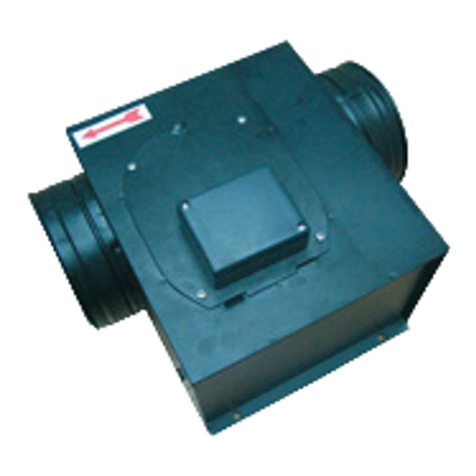
wolter
wolter RF Maintenance and operating instructions

NuAire
NuAire NTD-125 Series installation guide
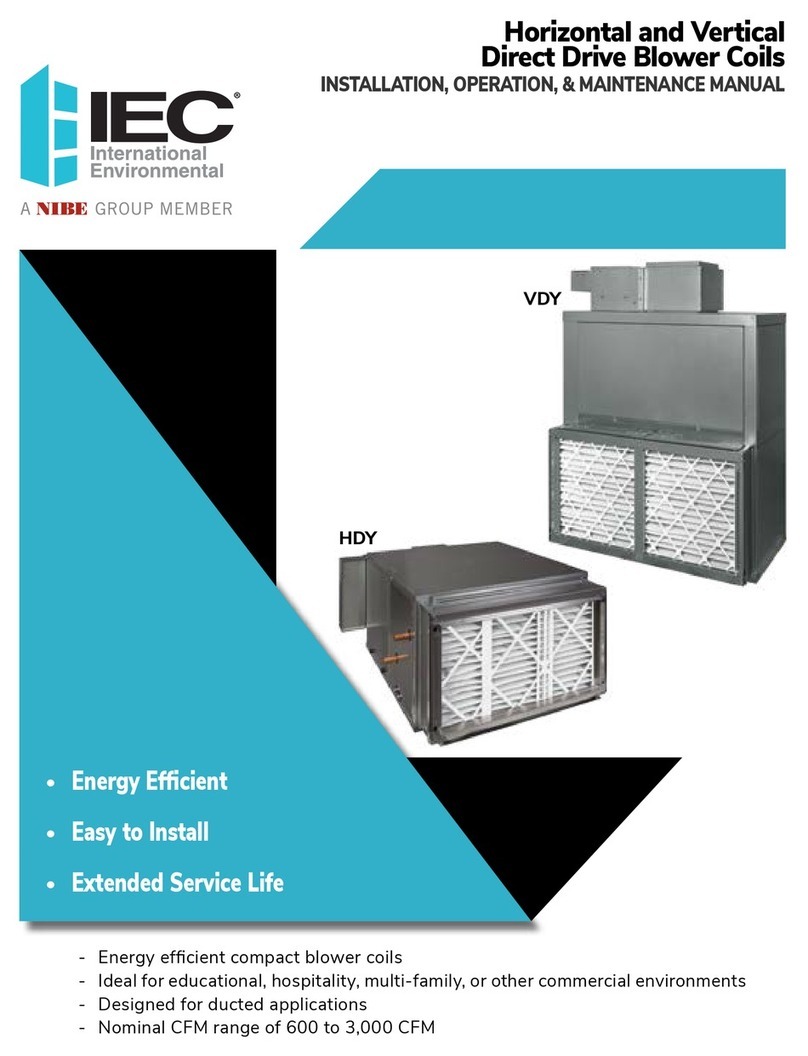
Nibe
Nibe IEC VDY Installation, operation & maintenance manual
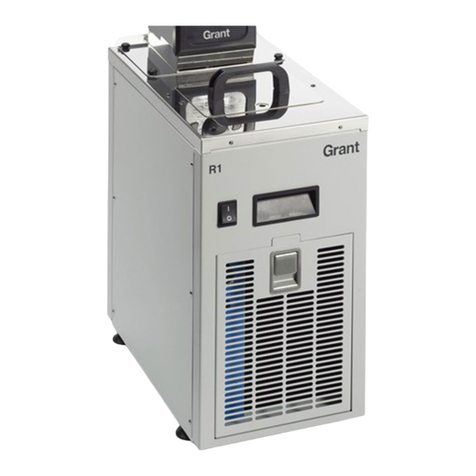
Grant Instruments
Grant Instruments R Series operating instructions
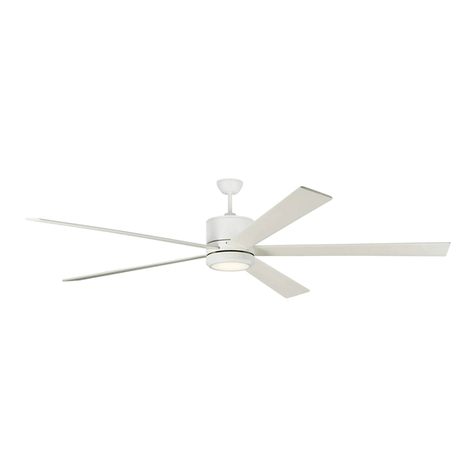
Monte Carlo Fan Company
Monte Carlo Fan Company 5VMR84 D Series Owner's guide and installation manual
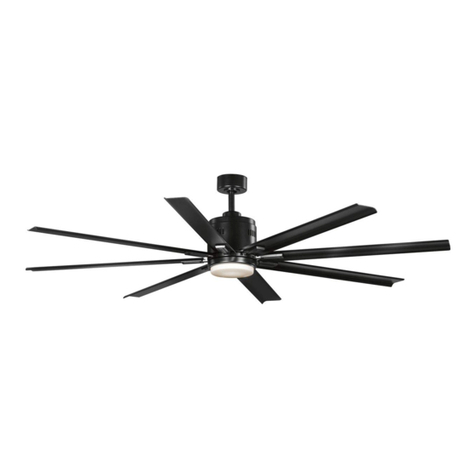
Progress Lighting
Progress Lighting P2550 installation manual
